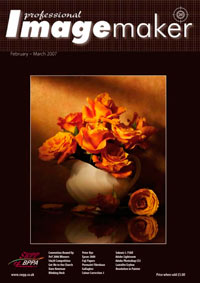articles/Weddings/churchontime-page2
Get me to the Church on Time - part 2 of 1 2 3 4
Published 01/02/2007
Wedding Photography in a Nutshell
The wedding photography business comprises just three things:
1. Taking pictures of people, who may or may not wish you to do so, and in front of a lot of other people.
2. Selling those pictures to the people who did not want to have then taken, as well as those who did (hopefully the bride and groom and their parents).
3. Collecting the money and handling your finances in such a way that you keep your spouse, accountant, tax man and VAT man happy.
A characteristic of wedding photography is the long time lag between providing the service (ie taking the shots) and closing the deal (albums delivered, account fully settled). While it is a characteristic shared by other businesses - it is, after all, a cash flow issue - the wedding photographer is most often a sole trader with limited reserves of cash to tide them over until accounts are settled. Some couples can take as long as 12 months to finalise their album choices - you have to devise every way you can (at the start at least) to reduce that time lag.
Start Up
Assuming that you are presently not sure if you wish to become a wedding photographer, here are some options to help you on your way:
1. If you are able to, go out with an established photographer. This can be tricky, not all photographers will be keen to assist a rival close to home, so you might have to travel. The essence of the Mentor Me programme is that our tutor, Martin Grahame-Dunn, has been, but is no longer, a wedding photographer and therefore regards none of his 'pupils' a rival.
2. You have to learn to use a camera and flash. If you are wishing to start operating digitally you also need to be competent with a computer and to fully understand the entire workflow (see review of Tom Lee's book later).
3. Start by photographing people - relatives and friends.
4. Develop #3 until you are confident enough to ask people to pay you for your portraits.
5. Progress towards photographing under weddinglike conditions. Buy or borrow a wedding dress, get a good-looking friend to model it and take their picture in simulated or real surroundings (if you cannot handle people walking up and asking what you are doing with a bride, outside an obviously closed church, weddings might not be for you anyway). Expect to pay from £50 to £350 for a second-hand dress and be aware that with fashions changing about on a two-season/year basis, an older dress might be out of fashion. On a quick visit to three local dress shops we found a threefold cost variation between the posher and less affluent parts of the borough. Look around, your dress is only a prop after all!
6. Pass up no opportunities to photograph family celebrations, but practise organising and arranging groups. Make up an album of the event.
7. Ask friends, sons, daughters, who are couples, if you can use them as models. Take faked or real engagement pictures. Practise setting up poses, posing hands, hiding defects, dealing with larger people. Remember you are learning the poses yourself but also learning to teach others to adopt them at your command. A bride is likely never to have walked down an aisle on her father's arm - it is your job to teach them how to do so if there is no stylist present.
8. If you are older, watch out for any friends who might be remarrying. Frequently they may not wish to engage the services of a professional photographer, which gives you the chance to photograph under real conditions without any pressure to succeed or perform to perfection.
9. Buy, and critically read, magazines on weddings and fashion magazines.
10. Enrol on the SWPP Mentor Me programme.
11. Mark in your diary which SWPP/BPPA seminars you are going to attend. Place equal emphasis on technical and marketing seminars. You can be the best Photoshop user in the world, but if you cannot tell anybody, how can they give you work?
12. Start the process of planning your advertising, stationery, accounting procedures and work out how you are going to sell yourself from home - unless you are flush with cash it is both risky and unlikely that you can start on the high street.
13. Decide if your home is a suitable place to conduct a portrait business, look into the insurance implications of having strangers in your home. You may conclude that you should specialise in location portraiture, in which case your lighting investment will be quite different, you will rapidly tire of dragging 1500-joule units up a flight of stairs - they are for fixed studio use.
14. Make a business plan and work out your charging structure, do your homework.
15. Visit www.startbusiness.co.uk for general advice but ignore the advice leaflet on starting in photography (if the summary is anything to go by, it contains the little gem '...and image manipulation software is routinely used to improve the photographs after they have been taken' ).
Please Note:
There is more than one page for this Article.
You are currently on page 2
- Get me to the Church on Time page 1
- Get me to the Church on Time page 2
- Get me to the Church on Time page 3
- Get me to the Church on Time page 4
1st Published 01/02/2007
last update 09/12/2022 14:52:27
More Weddings Articles
There are 0 days to get ready for The Society of Photographers Convention and Trade Show at The Novotel London West, Hammersmith ...
which starts on Wednesday 15th January 2025





